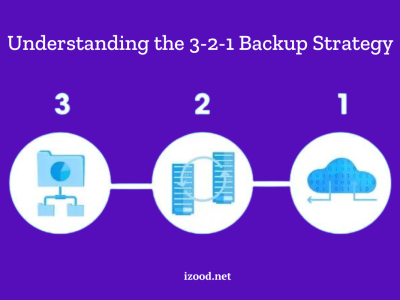
In Excel, freezing rows allows you to keep specific rows visible while scrolling through the rest of your spreadsheet. This feature is particularly useful when dealing with large datasets or when you want to keep important header information always in view. By freezing rows, you can easily compare data in different rows without losing reference to the column headers. In the following sections, we will explore various methods on how to freeze a row in Excel.
Why We Freeze Rows in Excel?
Freezing rows in Excel offers several benefits, including improved data analysis and easier navigation through your spreadsheet. Here are a few reasons why you might want to freeze rows:
- Comparing Data: When working with multiple rows of data, freezing rows allows you to compare values in different rows without losing sight of the column headers.
- Header Visibility: Freezing rows keeps important header information visible, making it easier to understand the context of your data.
- Efficient Data Analysis: By freezing rows, you can focus on specific sections of your spreadsheet while scrolling through the rest of the data.
- Better Visualization: Freezing rows helps maintain a consistent visual layout, making it easier to read and interpret your data.
Now that we understand the importance of freezing rows in Excel, let’s explore different methods on how to freeze a row in Excel.
How to Freeze a Row in Excel: The Top Row
The first method we’ll discuss is freezing the top row of your spreadsheet. This is ideal when you have column headers or labels that you want to keep visible as you scroll through your data. Follow these steps to freeze the top row in Excel:

- Select the row below the row you want to freeze. In this case, we want to freeze the top row, so we select row 2.
- Go to the View tab in the Excel ribbon.
- Locate the Freeze Panes option and click on it.
- From the dropdown menu, select Freeze Top Row.
After following these steps on how to freeze a row in Excel, you will notice a gray line below the top row, indicating that it is frozen. Now, as you scroll down through your spreadsheet, the top row will remain visible, allowing you to reference the column headers at all times.
How to Freeze Multiple Rows?
In some cases, you may need to freeze multiple rows in your Excel spreadsheet. This can be helpful when you have a large dataset and want to keep multiple rows visible as you navigate through your data. Follow these steps to freeze multiple rows in Excel:

- Select the row below the last row you want to freeze. For example, if you want to freeze rows 1 to 5, select row 6.
- Go to the View tab in the Excel ribbon.
- Locate the Freeze Panes option and click on it.
- From the dropdown menu, select Freeze Panes.
After completing these steps, you will see a gray line below the frozen rows, indicating that they are locked in place. Now, as you scroll through your spreadsheet, the frozen rows will stay visible, providing a reference for the data in those rows.
How to Freeze Columns in Excel?
In addition to freezing rows, Excel also allows you to freeze columns. This can be useful when you have wide datasets and want to keep specific columns visible as you scroll horizontally. Follow these steps to freeze columns in Excel:
- Select the column to the right of the column you want to freeze. For example, if you want to freeze column A, select column B.
- Go to the View tab in the Excel ribbon.
- Locate the Freeze Panes option and click on it.
- From the dropdown menu, select Freeze First Column.

Once you have completed these steps, you will see a gray line to the right of the frozen column, indicating that it is locked in place. As you scroll horizontally through your spreadsheet, the frozen column will remain visible, providing a reference for the data in that column.
How to Freeze Rows and Columns Simultaneously?
Excel also allows you to freeze both rows and columns simultaneously. This can be beneficial when you want to keep specific rows and columns visible as you navigate through your spreadsheet. Follow these steps to freeze rows and columns in Excel:

- Select the cell below the last row and to the right of the last column you want to freeze. For example, if you want to freeze the first two rows and the first two columns, select cell C3.
- Go to the View tab in the Excel ribbon.
- Locate the Freeze Panes option and click on it.
- From the dropdown menu, select Freeze Panes.
After following these steps, you will notice both gray lines indicating that the frozen rows and columns are locked in place. Now, as you navigate through your spreadsheet, the frozen rows and columns will remain visible, providing a reference for the corresponding data.
How Can I Unlock Frozen Rows and Columns?
If you no longer need to keep rows or columns frozen in Excel, you can easily unlock them. Follow these steps to unfreeze rows and columns:
- Go to the View tab in the Excel ribbon.
- Locate the Freeze Panes option and click on it.
- From the dropdown menu, select Unfreeze Panes.

By following these steps, you will unfreeze any previously locked rows or columns, allowing them to scroll freely with the rest of your spreadsheet.
How to Fix Freeze Panes Not Working Issue?
If you encounter issues with the Freeze Panes feature not working in Excel, there could be a few possible reasons. Here are a couple of troubleshooting tips:
- Exit Cell Editing Mode: Make sure you are not in cell editing mode when trying to freeze panes. Press the Enter or Esc key to exit cell editing mode before attempting to freeze panes.
- Remove Workbook Protection: If your worksheet is protected, you will need to remove the protection before you can freeze rows or columns. Refer to Excel’s documentation on how to remove workbook protection.
By following these troubleshooting tips, you should be able to resolve any issues with the Freeze Panes feature not working in Excel.
Also Read: The 10 Best Office Management Softwares
In Closing
Mastering Excel’s freezing rows and columns is vital for efficient data analysis. Whether you want to freeze the top row, multiple rows, columns, or a combination, Excel has options. With these skills, you’ll excel at handling complex spreadsheets and making data-driven decisions.











